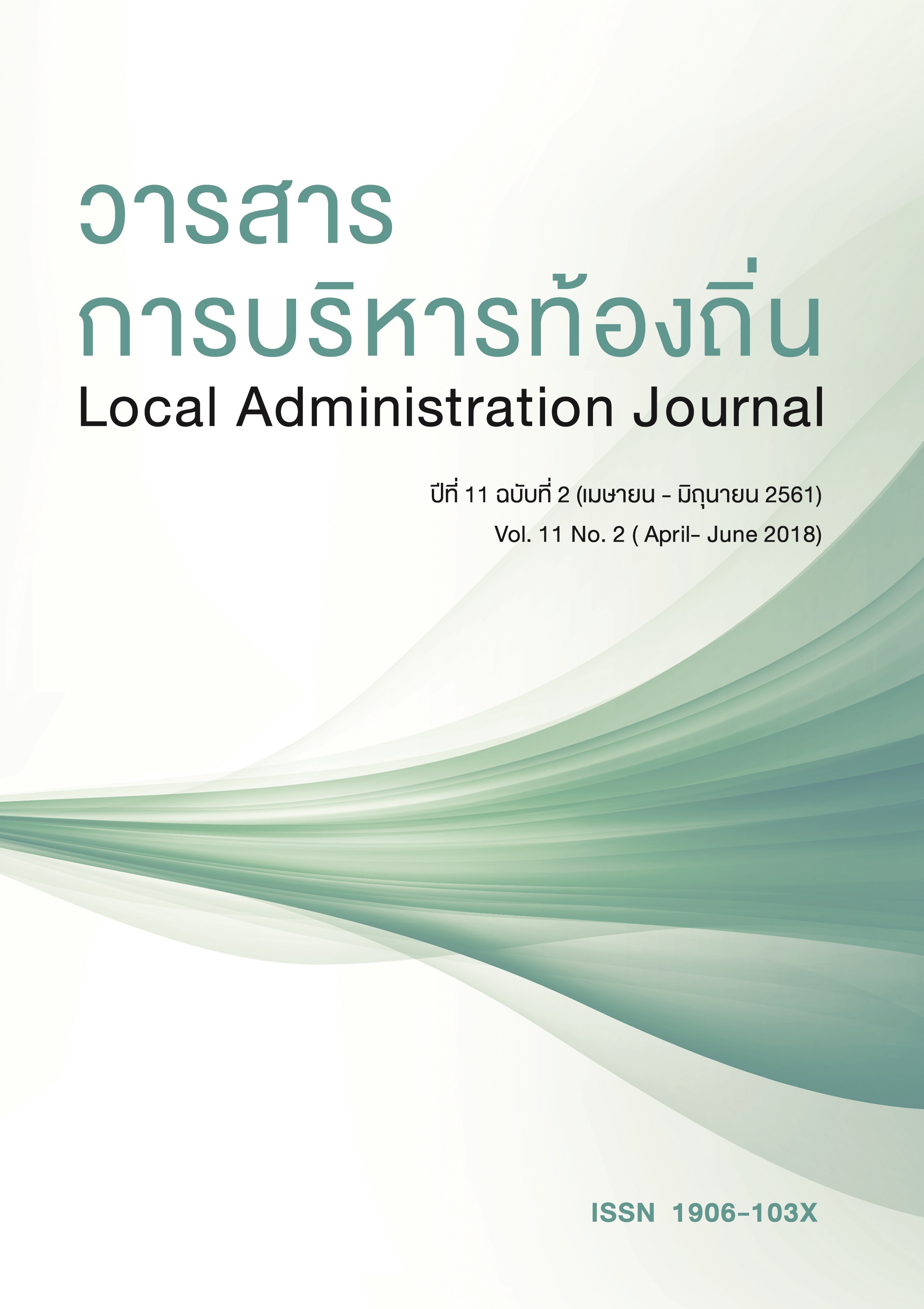การเคลื่อนไหวสิทธิที่ดินในอีสาน : บทเรียนและทิศทางใหม่ข้อเสนอต่อเครือข่ายปฏิรูปที่ดินภาคอีสาน
Keywords:
ขบวนการเคลื่อนไหว, สิทธิในที่ดิน, Social Movement, Land RightAbstract
บทคัดย่อ
การวิจัยนี้มีวัตถุประสงค์เพื่อ 1) วิเคราะห์สถานการณ์ความเหลื่อมล้ำอันสืบเนื่องมาจากปัญหาในการเข้าถึง ถือครอง และใช้ประโยชน์ที่ดินของชาวบ้านในอีสาน และ 2) เพื่อถอดบทเรียนของการเคลื่อนไหวเพื่อสิทธิที่ดินในอีสานโดยเครือข่ายปฏิรูปที่ดินภาคอีสานในห้วงที่ผ่านมา และนำเสนอทิศทางใหม่จากการเชื่อมโยงช่องว่างของการเคลื่อนไหวที่ผ่านมา โดยพิจารณาผ่าน 4 พื้นที่ 3 กรณีพิพาทได้แก่ 1) กรณีพิพาทอันเกิดจากการประกาศป่าอนุรักษ์ที่เป็นอุทยานแห่งชาติทับซ้อนกับพื้นที่ชุมชน 2) กรณีพิพาทอันเกิดจากการประกาศที่สาธารณประโยชน์ทับซ้อนกับพื้นที่ชุมชนและ 3) กรณีพิพาทอันเกิดจากการประกาศเขตสวนป่าขององค์การอุตสาหกรรมป่าไม้ (ออป.) ทับซ้อนกับพื้นที่ชุมชน โดยประชาชนที่มีกรณีพิพาทดังกล่าวร่วมกันเคลื่อนไหวต่อสู้ในนามของเครือข่ายปฏิรูปที่ดินภาคอีสาน (คปอ.) ผลการศึกษาในส่วนของบทวิเคราะห์ความเหลื่อมล้ำที่เกิดขึ้นกับชาวบ้านที่อาศัยอยู่ในพื้นที่ที่มีกรณีพิพาทกับราชการ พบว่าชาวบ้านเผชิญกับความ เหลื่อมล้ำในหลายมิติ ทั้ง ความเหลื่อมล้ำทางการเมือง ความเหลื่อมล้ำทางเศรษฐกิจ ความเหลื่อมล้ำทางสังคมและทางวัฒนธรรม ความเหลื่อมล้ำทางสิ่งแวดล้อมและในเชิงพื้นที่ และความเหลื่อมล้ำของความรู้ นอกจากนี้เมื่อวิเคราะห์บทเรียนการเคลื่อนไหวด้านสิทธิที่ดินของเครือข่ายปฏิรูปที่ดินภาคอีสานที่ผ่านมาพบว่ามีช่องว่างหลายด้าน ได้แก่ ช่องว่างมิติที่หนึ่ง ยุทธศาสตร์การเคลื่อนไหวที่ผ่านมาเกือบทั้งหมดของเครือข่ายปฏิรูปที่ดินภาคอีสานเน้นไปที่ยุทธศาสตร์ที่มุ่งเป้าในเชิงสัญลักษณ์เป็นหลัก ช่องว่างประการที่สอง การขับเคลื่อนเพื่อนำไปสู่การจัดสรรทรัพยากรใหม่ยังไม่มีผลที่เป็นรูปธรรม ช่องว่างประการที่สาม แนวร่วมการใช้สื่อและเข้าถึงสื่อในเรื่องปัญหาที่ดินอยู่ในวงจำกัด ช่องว่างสุดท้าย ที่การมุ่งปรับระเบียบกฎเกณฑ์ที่เป็นอยู่ไม่บรรลุผลนักเพราะขบวนการขาดโอกาสที่เท่าเทียมในการมีส่วนร่วม
Land right movements in the North-east region (ISAN): Lessons and new directions proposing to the ISAN land reform network
Abstract
This research aims to (1) analyse the situation of inequality as a consequence of the problems of accessing, holding and utilising lands of the North-east (ISAN) people, and to (2) draw the lessons of the land right movements in the ISAN region by the ISAN land reform network as well as proposing the new directions that can bridge the gaps of the previous movements. In doing so, this research considers 4 areas with 3 conflicting issues including 1) conflicting issues as a result of forest conservation through the announcement of the new national park intersecting the existing lands that old community has already been settled in, 2) conflicting issues as a result of the announcement of public lands intersecting the existing community spaces, and 3) conflicting issues as a result of the announcement of the new forestry zone by the Forest Industry Organisation in people’s lands. The movements to reclaim the land right are in the name of the ISAN land reform network. The study found that relevant people faced with the multi-dimensional inequalities including political, economic, socio-cultural, environmental, spatial and knowledge inequalities. Furthermore, by analysing the past movements, this study found some gaps. The first gap is that most movement strategies of the network emphasised on symbolic purpose. The second gap is the fact that the redistributive movements have still not had the concrete results. The third gap is that the utility and accessity of media used in stimulating the movements have still been limited. For the last one, the gap is that the regulative movements have still not been achieved as a consequence of the lack of parity of participation.
Published
How to Cite
Issue
Section
License
The copyright of all articles published in the Local Administration Journalis owned by the College of Local Administration, Khon Kaen University.



